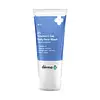What's inside
What's inside
 Key Ingredients
Key Ingredients

 Benefits
Benefits

 Concerns
Concerns

 Ingredients Side-by-side
Ingredients Side-by-side

Water
Skin ConditioningSodium Laureth Sulfate
CleansingDecyl Glucoside
CleansingCocamidopropyl Betaine
CleansingGlycerin
HumectantPEG-55 Propylene Glycol Oleate
Propylene Glycol
HumectantSodium Chloride
MaskingPanthenol
Skin ConditioningPEG-7 Glyceryl Cocoate
EmulsifyingPhenoxyethanol
PreservativeGlycol Distearate
EmollientTocopheryl Acetate
AntioxidantPolyquaternium-39
Cocamide Mea
EmulsifyingLaureth-10
EmulsifyingDisodium EDTA
Sodium Benzoate
MaskingHydroxypropyl Cyclodextrin
MaskingPantolactone
HumectantBenzoic Acid
MaskingBisabolol
MaskingIodopropynyl Butylcarbamate
PreservativeWater, Sodium Laureth Sulfate, Decyl Glucoside, Cocamidopropyl Betaine, Glycerin, PEG-55 Propylene Glycol Oleate, Propylene Glycol, Sodium Chloride, Panthenol, PEG-7 Glyceryl Cocoate, Phenoxyethanol, Glycol Distearate, Tocopheryl Acetate, Polyquaternium-39, Cocamide Mea, Laureth-10, Disodium EDTA, Sodium Benzoate, Hydroxypropyl Cyclodextrin, Pantolactone, Benzoic Acid, Bisabolol, Iodopropynyl Butylcarbamate
Water
Skin ConditioningCocamidopropyl Betaine
CleansingSodium Laureth-5 Carboxylate
CleansingDecyl Glucoside
CleansingAcrylates Copolymer
Coco-Glucoside
CleansingCocamide
EmulsifyingEthanolamine
BufferingGlycerin
HumectantPropanediol
SolventSodium Ascorbyl Phosphate
AntioxidantPolysorbate 20
EmulsifyingRosa Canina Fruit Extract
AstringentCitrus Sinensis Peel Extract
PerfumingCitric Acid
BufferingSodium Hydroxide
BufferingMethylchloroisothiazolinone
PreservativeMethylisothiazolinone
PreservativeEDTA
Water, Cocamidopropyl Betaine, Sodium Laureth-5 Carboxylate, Decyl Glucoside, Acrylates Copolymer, Coco-Glucoside, Cocamide, Ethanolamine, Glycerin, Propanediol, Sodium Ascorbyl Phosphate, Polysorbate 20, Rosa Canina Fruit Extract, Citrus Sinensis Peel Extract, Citric Acid, Sodium Hydroxide, Methylchloroisothiazolinone, Methylisothiazolinone, EDTA
 Reviews
Reviews

Ingredients Explained
These ingredients are found in both products.
Ingredients higher up in an ingredient list are typically present in a larger amount.
Cocamidopropyl Betaine is a fatty acid created by mixing similar compounds in coconut oil and dimethylaminopropylamine, a compound with two amino groups.
This ingredient is a surfactant and cleanser. It helps gather the dirt, pollutants, and other impurities in your skin to be washed away. It also helps thicken a product and make the texture more creamy.
Being created from coconut oil means Cocamidopropyl Betaine is hydrating for the skin.
While Cocamidopropyl Betaine was believed to be an allergen, a study from 2012 disproved this. It found two compounds in unpure Cocamidopropyl Betaine to be the irritants: aminoamide and 3-dimethylaminopropylamine. High-grade and pure Cocamidopropyl Betaine did not induce allergic reactions during this study.
Learn more about Cocamidopropyl BetaineDecyl Glucoside is a glucose-based surfactant and emulsion stabilizer. It is created by reacting glucose with the fatty acids from plants.
Surfactants help clean the skin by trapping oil, sebum, and dirt to be washed away. As an emulsion stabilizer, it stabilizes the ingredients in a product by preventing them from separating.
This ingredient is biodegradable and non-toxic. This ingredient is commonly found in baby shampoos.
Decyl Glucoside is sometimes used to stabilize the UV filter Tinosorb.
Learn more about Decyl GlucosideGlycerin is already naturally found in your skin. It helps moisturize and protect your skin.
A study from 2016 found glycerin to be more effective as a humectant than AHAs and hyaluronic acid.
As a humectant, it helps the skin stay hydrated by pulling moisture to your skin. The low molecular weight of glycerin allows it to pull moisture into the deeper layers of your skin.
Hydrated skin improves your skin barrier; Your skin barrier helps protect against irritants and bacteria.
Glycerin has also been found to have antimicrobial and antiviral properties. Due to these properties, glycerin is often used in wound and burn treatments.
In cosmetics, glycerin is usually derived from plants such as soybean or palm. However, it can also be sourced from animals, such as tallow or animal fat.
This ingredient is organic, colorless, odorless, and non-toxic.
Glycerin is the name for this ingredient in American English. British English uses Glycerol/Glycerine.
Learn more about GlycerinWater. It's the most common cosmetic ingredient of all. You'll usually see it at the top of ingredient lists, meaning that it makes up the largest part of the product.
So why is it so popular? Water most often acts as a solvent - this means that it helps dissolve other ingredients into the formulation.
You'll also recognize water as that liquid we all need to stay alive. If you see this, drink a glass of water. Stay hydrated!
Learn more about Water